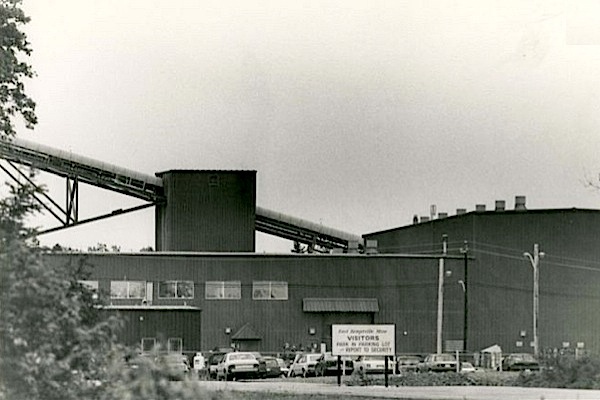Avalon banks on new ‘blood metals’ rule for Canada’s tin mine success

The Rio Algom mine closed in 1992. The pit — 1.5 kilometres long, 0.5 km wide and 60 metres deep — was then flooded, with runoff directed to a tailings pond for treatment. (Image by Fred A. Hatfield | Flickr Commons)
Canada’s Avalon Rare Metals (TSX:AVL), until now mostly known for its incursion in the rare earths market, is proceeding with a $1.3 million work program in South-western Nova Scotia to reopen a historic tin-indium mine.
The company, working on completing a Preliminary Economic Assessment (“PEA”) for the project by November this year, is betting on recently drafted legislation in Europe, which will require importers to ensure their their supply chains are not directly or indirectly contributing to conflict financing and/or serious human rights abuses.
Speaking at the 128th Annual Meeting of The Nova Scotia Mining Society late in June, Avalon’s President and CEO Don Bubar said the European Union anti “blood metals” rules, together with the U.S. Dodd-Frank Act, which forces US stock exchange-listed companies to disclose the use of minerals from a conflict zone in their supply chains, gives Avalon’s tin project huge advantages.
The miner was granted a special exploration licence to search 22 claims totalling 356.12 hectares. It also received a $40,000 project grant from the province earlier this year to assist with test drilling.
“We’re hopeful, at this point,” Natural Resources Minister Zach Churchill told MINING.com in an interview mid-June, adding that since market prices for tin have improved, the Nova Scotia government is optimistic about the prospects at the location.
“Any activity on that site is encouraging, but we need to wait and see what the results of the ongoing exploration drilling are before we rise our hopes too much,” Churchill said. He also noted there would have to be an environmental assessment done before any work can resume at the site.
Victim of falling prices
The Rio Algom tin mine in East Kemptville operated in the area from the mid-1980s to 1992, employing 200 people from Yarmouth and Shelburne counties. At the time, it was North America’s only open-pit tin mine, but it had to close after prices for the metal dropped to levels reaching well below US$3 per pound.
And while the metal used in electronics and packaging is now trading at more than double that price, it is down 23% so far this year, which makes it the worst-performing industrial metal on the London Metal Exchange.
No wonder analysts are not optimistic about the short-term outlook for it. Steve Hardcastle, head of client services for industrial commodities at Sucden Financial Ltd. in London, is one of them. He told Bloomberg last week that tin prices were set for the biggest first-half decline in 25 years because of abundant supplies and weak demand.
“The long-term future for tin is not brilliant, and it’s been reflected in the price,” Hardcastle said. “The big unknown 18 months ago was Myanmar, which is now filling the gap.”
In addition to East Kemtpville, Avalon Rare Metals has projects underway in Separation Rapids near Kenora, Ontario and Nechalacho, Thor Lake, in the North West Territories.
{{ commodity.name }}
{{ post.title }}
{{ post.date }}





Comments
Mike Wort
Tin has its ups and downs just like everything else. But the connection with indium is interesting. Where exactly (i.e. in which mineral)does the indium sit? Most commonly it is associated with sphalerite (ZnS).